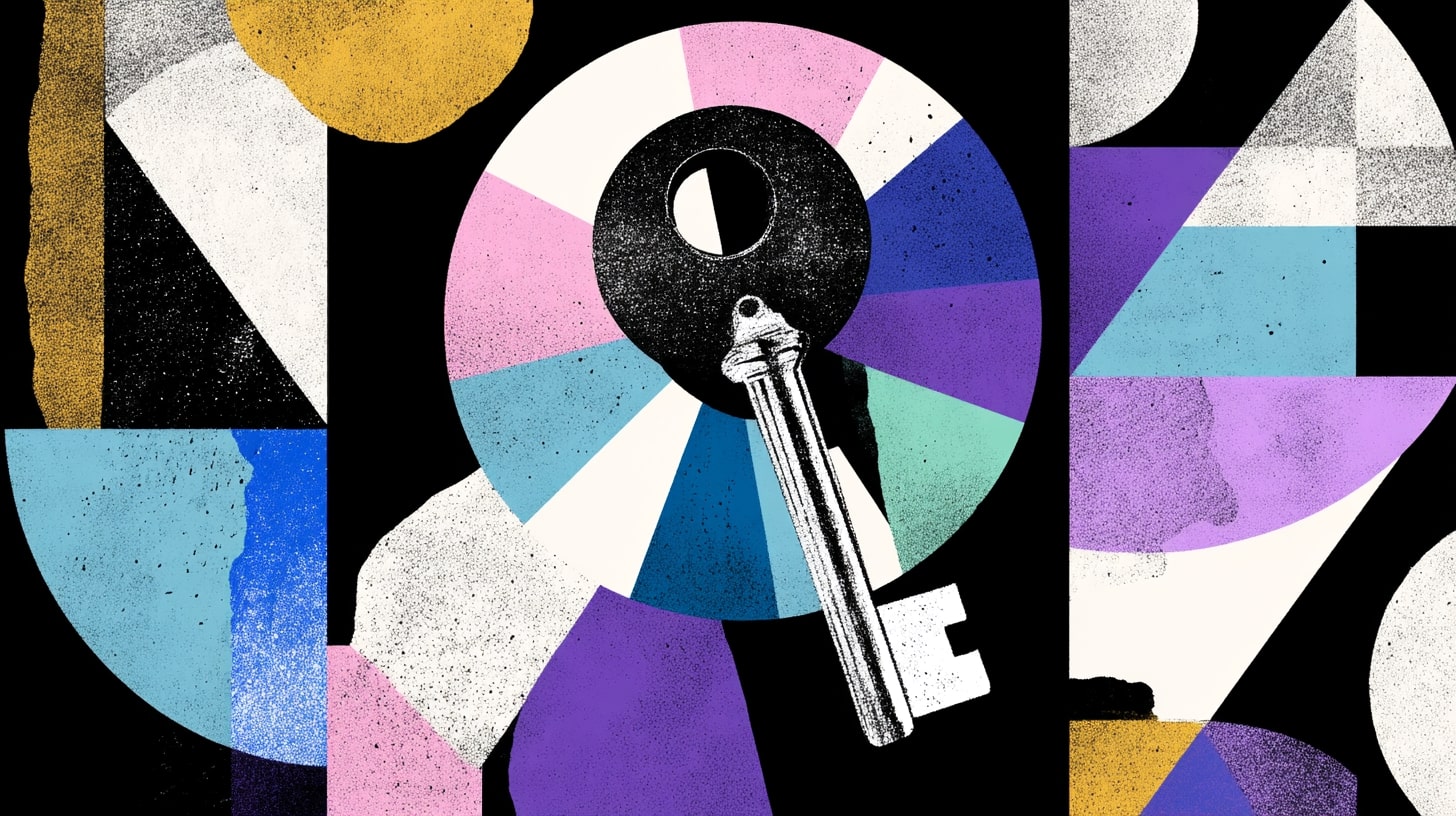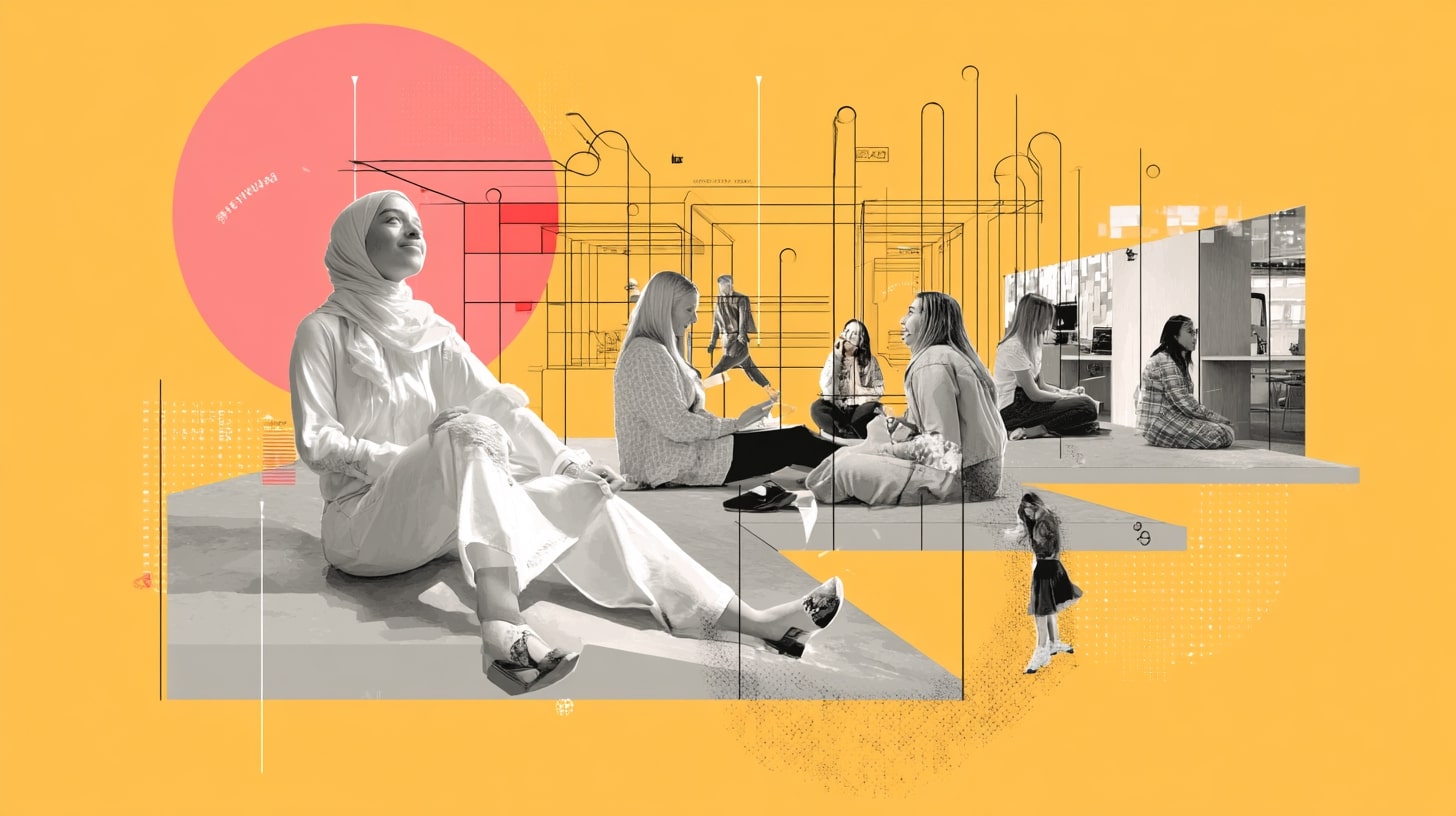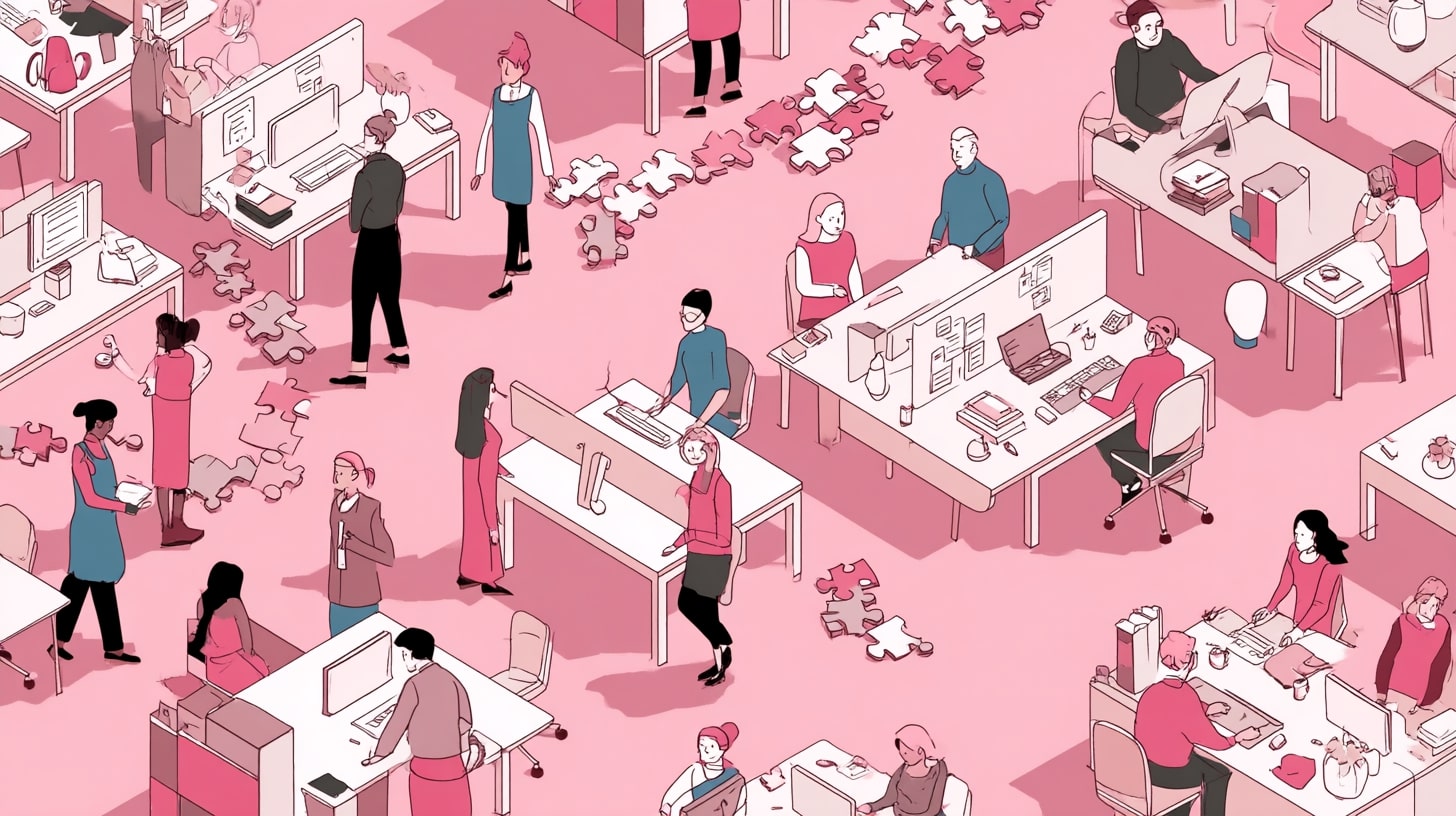When I read university strategies, there tend to be three themes – teaching, research, and that stuff that underpins it.
If I’m glancing through students’ union strategies, there’s almost always a version of voice, activities/opportunities, and that stuff that underpins it.
And so it is also the case that when we think about higher education regulation in England, everything from the TEF to the Regulatory Framework tends to have a triangle too – there’s experience, outcomes and that other stuff.
The problem is that the case of disabled students presents a bit of a problem for the design of the regulation.
Whatever the current design or theory of change being deployed, the basic question that OfS asks providers to ask is – are disabled students’ outcomes worse than everyone else’s?
The underpinning theory is that if they are, that’s bound to be because their experience is worse. And if the experience was so poor as to be unlawful, that would definitely show up in outcomes.
But what if, despite the experience being considerably (and often unlawfully) worse, the outcomes are broadly comparable – or even better? Where does that leave regulation that tends to start with outcomes and work backwards, rather than start with experience and then feed forwards?
A new brief
The Office for Students (OfS) has published new research that seems to show that disabled students are increasingly dissatisfied with their university experience even as their degree outcomes improve.
The regulator has released two documents – a new insight brief examining equality of opportunity for disabled students, and commissioned research from Savanta exploring how 150 students experienced applying for reasonable adjustments.
The publications come via work from the OfS Disability in Higher Education Advisory Panel, which was established in April 2024 to improve disabled students’ experiences and provide expert guidance.
The latest data reveals an interesting pattern. For full-time undergraduates with reported disabilities, continuation rates are now 1.1 percentage points higher than for non-disabled peers – and attainment rates are 2.0 percentage points higher. That’s a significant shift from 2019 when disabled students lagged behind on both measures.
It’s worth saying that, albeit on a smaller N, part-time undergraduates and degree apprentices tell a different story. Part-time disabled students have completion rates 13.0 percentage points lower than their non-disabled peers whilst degree apprentices show a 5.0 percentage point gap in attainment. These gaps suggest that not all disabled students are benefiting equally from institutional support.
But back on full-time students, when it comes to experience, National Student Survey (NSS) results paint a very different picture. Disabled students consistently report lower satisfaction across all seven themes measured by the survey, and the gaps have grown over the past two years.
The difference in satisfaction with organisation and management has widened from 6.5 percentage points in 2023 to 7.5 percentage points in 2025. Assessment and feedback satisfaction gaps have grown from 2.5 to 3.7 percentage points over the same period.
Complaints to the Office of the Independent Adjudicator (OIA) tell a similar story. Disabled students now represent over 40 per cent of OIA complaints, up from around one-third in 2023. More significantly, a higher proportion of disabled students’ complaints are being upheld, suggesting some universities are failing to meet their legal obligations.
Six years on
The insight brief isn’t OfS’ first disabled students insight rodeo. 2019’s Insight brief asked whether universities were doing enough for disabled students. It contained a prescient observation:
“Many disabled students are achieving despite the barriers which remain in their way, not because these barriers have been entirely removed.
Over time, the disabled student population has grown substantially. In 2017, 13.2 per cent of students reported a disability. By 2023-24, this had risen to 19.9 per cent of full-time undergraduates and 24.6 per cent of part-time undergraduates. Mental health conditions have driven much of this increase, growing from 0.6 per cent of all students in 2010 to representing a significant proportion of disabled students today.
2019 focused heavily on the social model of disability and questioned whether universities had truly embedded inclusive practices into their institutional structures. It noted that whilst many providers claimed to follow the social model, in practice they still treated disabled students as problems to be solved rather than addressing environmental barriers.
2025’s brief takes a more pragmatic approach. Rather than debating models of disability, it provides a checklist of specific actions universities should take on experience that draws on the new evidence sources – including workshops with 105 university representatives and the Savanta research to understand both student experiences and institutional challenges.
You could call it a statement of expectations, although OfS doesn’t quite go that far.
The Savanta research found that 43 per cent of disabled students had applications for reasonable adjustments fully or partially rejected. Of those students whose needs were not fully met, 91 per cent took further action such as seeking advice or lodging complaints. This level of self-advocacy suggests that students are fighting for support rather than receiving it as a matter of course.
The research also revealed significant differences between mature and younger students. Mature students were much more likely to take proactive steps when their support was inadequate, with 53 per cent following up or escalating concerns compared with 31 per cent of younger students. Success appears to depend partly on students’ ability to work the system rather than the system working for students.
Implementation delays are another indicator that students are succeeding despite rather than because of support arrangements. Over half of students who received positive application outcomes waited five weeks or longer for support to be implemented. Students with three or more health conditions faced even longer waits, with 73 per cent waiting five weeks or more for exam adjustments compared with 45 per cent of students with fewer conditions.
Workshops with university representatives showed that only 15.2 per cent of institutions have established processes for systematically evaluating whether reasonable adjustments are effective. That suggests most universities are not learning from experience or improving their support based on evidence of what works. Students are therefore navigating systems that are not designed to continuously improve.
And the National Student Survey data on organisation and management is particularly telling. This theme, which includes questions about whether the course is well organised and running smoothly and whether the timetable works efficiently, shows the largest gap between disabled and non-disabled students at 7.5 percentage points. If disabled students are achieving good academic outcomes whilst rating organisational aspects poorly, they must be compensating for institutional failings through extra effort.
Disabled Students UK’s 2024 research reinforces this picture. It found that only 38 per cent of disabled students who declared their disability reported having the support they need to access studies on equal terms with non-disabled peers. It also noted that most disabled students hold back from raising access issues with their university, suggesting they are managing barriers independently rather than relying on institutional support.
And the OIA’s annual reports note that disabled students are overrepresented in complaints and that events occurring because a student is disabled are likely to have significant and lasting impacts. The 2024 report specifically highlighted complaints about implementation of support and reasonable adjustments to teaching and assessment. If support systems were working effectively, disabled students wouldn’t need to resort to formal complaints at such high rates.
The brief reminds readers that the Equality of Opportunity Risk Register now explicitly identifies being disabled as a characteristic indicating risk to student success, and reminds that Access and Participation Plans must address gaps in disabled students’ outcomes with specific targets – and that OfS then monitors progress against these commitments.
But there’s a problem. Providers would have to pick those risks, and pick disabled students.
We (don’t) have a plan
If we look across 99 now published Access and Participation Plans for universities, 27 providers have no disability targets whatsoever across any stage of the student lifecycle including widening access.
Then if we isolate targets related to experience (ie we ignore access), thirty-five providers have set no targets for disabled students in the continuation, completion, attainment or progression stages. This means over one-third of institutions have no measurable goals for improving outcomes once disabled students arrive on campus.
Most that do have a target don’t have them in all three of the experience measures. And even those that have targets often have them for a subset of disabled students where the disability type suggests a gap.
If we assume that providers have been reasonable in not selecting disabled students and/or the risks in the EORR associated with disabled students, it’s a design problem. For a start, when an issue is spread thinly across providers and you have a provider-based regulatory system, you don’t get detailed plans in large parts of the long tail – and so the actions are absent.
But that’s not the only problem. If we then turn to what providers say they do or are promising to do and look at the aspects of OfS’ checklist that directly relate to student experience, just 39 discuss a process for students to raise issues if support isn’t meeting needs or isn’t implemented properly, and none of the others (working with and listening to disabled students, communication about reasonable adjustments, sharing information about adjustments across the institution and ensuring teaching and assessments are accessible for disabled students while maintaining rigour) go above 60.
Even then, we tend to see descriptions of existing activity and service provision rather than a new and properly resourced intervention. After all, who’s going to put in their plan that new for this cycle is that provider complying with the law?
Imagine if the design worked the other way. OfS – as it did with Harassment and Sexual Misconduct (first with a Statement of Expectations, then through a formal Regulatory Condition) – sets out expectations. Then through polling (or ideally, an NSS extension, again a la H&SM) determines whether students are experiencing those expectations. Then it can take both system-wide and provider-level action.
That – as is also the case with Harassment and Sexual Misconduct – might all lead to better outcomes, it might not. But those design flaws mean that for plans to be made and action to be monitored to secure students’ basic legal rights over their HE, there have to be a decent number of disabled students at their provider, and they have to be failing. If not, no promised action.
Checklists and ticked boxes
Overall, we’re left with a checklist – one that represents a pragmatic attempt to provide universities with clear guidance about what they should be doing to support disabled students. The questions about personalisation, implementation, communication, information-sharing, complaints processes, evaluation and accessible assessment all address real problems identified in the research.
But that checklist’s weaknesses reflect a broader challenge in OfS regulation of experience. The questions are framed as prompts for institutional reflection rather than as requirements with clear standards. That approach may encourage tonal buy-in from universities, but it risks allowing institutions to tick boxes without making meaningful changes. And that’s if they even download the PDF.
The checklist doesn’t specify what good looks like in any of the areas. It doesn’t set expectations about response times, explain what effective information-sharing systems should include, or define what routine evaluation means in practice. The lack of specificity makes it difficult for institutions to know whether they are meeting expectations, or for OfS to hold them accountable.
Nor does the checklist address the resource constraints that universities identified as barriers to supporting disabled students effectively. The workshops noted that more students are reporting disabilities, that many have complex support needs and that institutions face staff shortages and stretched budgets.
Unlike on H&SM – where OfS says “afford this detail or don’t provide HE” – the checklist acknowledges none of the challenges nor provides guidance about how universities should prioritise support when resources are limited.
As usual on disability, no teeth are being bared here – a list of questions to muse on, rather than requirements to meet, and no consequences for those that fail.
To be fair, the brief notes that students can make internal complaints, complain to the OIA or take their university to court. But as OfS CEO Susan Lapworth herself said about students in general – let alone disabled students – back in 2019:
We should… consider whether a model that relies primarily on individual students challenging a provider for a breach of contract places a burden on students in an undesirable way.
As I say, the checklist is a useful starting point for institutional self-reflection. But without clearer standards, stronger accountability mechanisms and recognition of the resource challenges universities face, it is unlikely to transform disabled students’ experiences, and is more likely to be just another PDF whose link I look up in a few years time in another article like this.
And crucially, the evidence suggests that plenty of disabled students will continue to succeed despite, rather than because, laws that are supposed to achieve equality.










